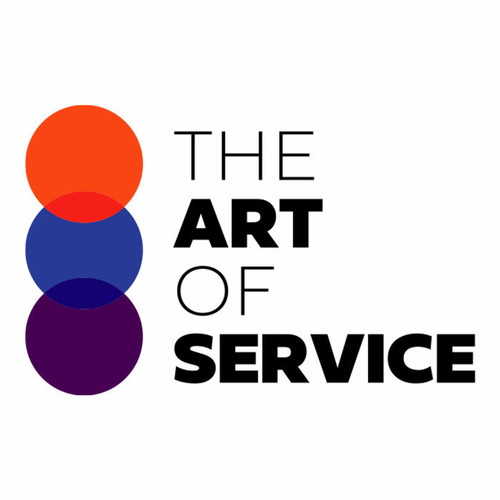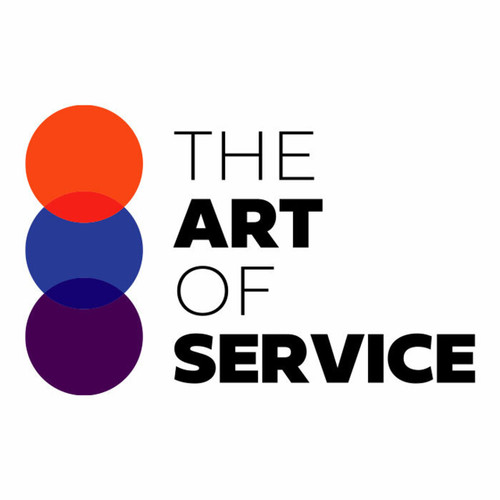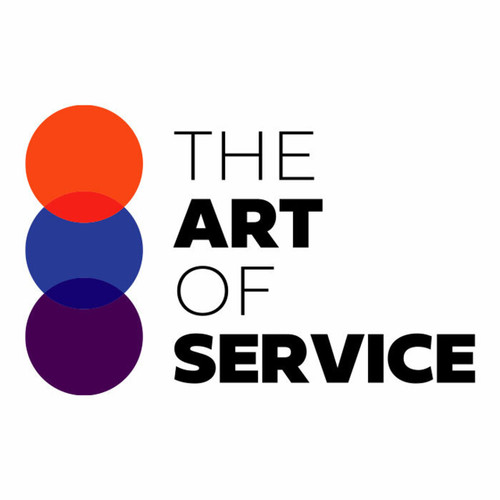This comprehensive dataset is designed to provide you with the most important questions, solutions, benefits, and results by urgency and scope - offering unmatched value to professionals in all industries.
You no longer have to spend endless hours researching and strategizing on how to handle outdated data and prioritize modernization efforts.
Our dataset of 1502 prioritized requirements, solutions, benefits, and results has been carefully curated to meet the specific needs of businesses and organizations looking to stay ahead in our rapidly evolving digital landscape.
What sets our Data Modernization and Data Obsolescence Knowledge Base apart from competitors and alternatives? Simple - it is the most comprehensive and user-friendly dataset on the market.
Our team of experts has spent years gathering and organizing the most relevant and up-to-date information, making it easy for you to find the answers you need quickly and efficiently.
Not only that, but our Knowledge Base is also a cost-effective and DIY alternative to expensive consulting services.
With this product, you have everything you need at your fingertips - no need to hire outside help or invest in costly software.
It′s a one-stop-shop for all your data modernization and data obsolescence needs.
But don′t just take our word for it - our example case studies and use cases speak for themselves.
See first-hand how our customers have successfully implemented our solutions and achieved amazing results.
From small businesses to large corporations, our dataset has helped organizations of all sizes thrive in today′s digital landscape.
So why wait? Don′t let outdated and obsolete data hold your business back any longer.
Invest in the Data Modernization and Data Obsolescence Knowledge Base and stay ahead of the game.
Order now and experience the benefits of this essential tool for professionals.
Trust us when we say, it will be worth every penny!
Discover Insights, Make Informed Decisions, and Stay Ahead of the Curve:
Key Features:
Comprehensive set of 1502 prioritized Data Modernization requirements. - Extensive coverage of 110 Data Modernization topic scopes.
- In-depth analysis of 110 Data Modernization step-by-step solutions, benefits, BHAGs.
- Detailed examination of 110 Data Modernization case studies and use cases.
- Digital download upon purchase.
- Enjoy lifetime document updates included with your purchase.
- Benefit from a fully editable and customizable Excel format.
- Trusted and utilized by over 10,000 organizations.
- Covering: Backup And Recovery Processes, Data Footprint, Data Architecture, Obsolete Technology, Data Retention Strategies, Data Backup Protocols, Migration Strategy, Data Obsolescence Costs, Legacy Data, Data Transformation, Data Integrity Checks, Data Replication, Data Transfer, Parts Obsolescence, Research Group, Risk Management, Obsolete File Formats, Obsolete Software, Storage Capacity, Data Classification, Total Productive Maintenance, Data Portability, Data Migration Challenges, Data Backup, Data Preservation Policies, Data Lifecycles, Data Archiving, Backup Storage, Data Migration, Legacy Systems, Cloud Storage, Hardware Failure, Data Modernization, Data Migration Risks, Obsolete Devices, Information Governance, Outdated Applications, External Processes, Software Obsolescence, Data Longevity, Data Protection Mechanisms, Data Retention Rules, Data Storage, Data Retention Tools, Data Recovery, Storage Media, Backup Frequency, Disaster Recovery, End Of Life Planning, Format Compatibility, Data Disposal, Data Access, Data Obsolescence Planning, Data Retention Standards, Open Data Standards, Obsolete Hardware, Data Quality, Product Obsolescence, Hardware Upgrades, Data Disposal Process, Data Ownership, Data Validation, Data Obsolescence, Predictive Modeling, Data Life Expectancy, Data Destruction Methods, Data Preservation Techniques, Data Lifecycle Management, Data Reliability, Data Migration Tools, Data Security, Data Obsolescence Monitoring, Data Redundancy, Version Control, Data Retention Policies, Data Backup Frequency, Backup Methods, Technology Advancement, Data Retention Regulations, Data Retrieval, Data Transformation Tools, Cloud Compatibility, End Of Life Data Management, Data Remediation, Data Obsolescence Management, Data Preservation, Data Management, Data Retention Period, Data Legislation, Data Compliance, Data Migration Cost, Data Storage Costs, Data Corruption, Digital Preservation, Data Retention, Data Obsolescence Risks, Data Integrity, Data Migration Best Practices, Collections Tools, Data Loss, Data Destruction, Cloud Migration, Data Retention Costs, Data Decay, Data Replacement, Data Migration Strategies, Preservation Technology, Long Term Data Storage, Software Migration, Software Updates
Data Modernization Assessment Dataset - Utilization, Solutions, Advantages, BHAG (Big Hairy Audacious Goal):
Data Modernization
Data modernization involves updating and improving data management processes and infrastructure. Technical experts at the organization can provide guidance on creating a better data architecture.
1. Utilize cross-functional teams: Involving experts from various departments to develop data architecture guidance ensures a comprehensive and well-rounded approach.
2. Train existing staff: Investing in training existing employees can equip them with the necessary skills to support data modernization efforts.
3. Hire data consultants: Expert consultants can provide valuable insights and recommendations for developing a robust data architecture.
4. Utilize external resources: Partnering with external data experts or outsourcing data-related tasks can help ease the workload and accelerate the modernization process.
5. Conduct internal audits: Regularly assessing data systems and processes can help identify areas that may require improvement or update.
6. Automate data management: Implementing automation tools for data management can streamline processes and reduce the potential for errors.
7. Adopt cloud-based solutions: Cloud technology offers scalability, agility, and cost-effectiveness, making it an ideal solution for data modernization.
8. Implement data governance policies: Having clearly defined data governance policies can ensure consistency and quality of data across the organization.
9. Prioritize data security: As data becomes more accessible, it is crucial to prioritize data security to protect against cyber threats and data breaches.
10. Define a data roadmap: Developing a clear data strategy and roadmap can provide a framework for modernizing data systems and processes.
CONTROL QUESTION: Which technical experts at the organization can support the development of data architecture guidance?
Big Hairy Audacious Goal (BHAG) for 10 years from now:
In 10 years, our organization′s Data Modernization strategy aims to become a leader in utilizing data as a strategic asset and driving innovation through data-driven decision making. To achieve this, our ultimate goal is to establish a robust and scalable data architecture that enables us to effectively collect, store, process, and analyze vast amounts of data from multiple sources.
This data architecture will serve as the foundation for all of our data-driven initiatives and will be continuously optimized to support our ongoing growth and evolution. To ensure the success of this goal, we will need the support and expertise of highly skilled technical experts who are well-versed in all aspects of data architecture and modernization.
These technical experts will play a crucial role in guiding the development and implementation of our data architecture roadmap, identifying and implementing the most suitable technologies for our specific needs, and ensuring the overall reliability, security, and scalability of our data infrastructure.
They will also work closely with our data scientists, analysts, and other non-technical stakeholders to understand their specific data requirements and provide them with the necessary guidance and resources to leverage our data architecture effectively.
We recognize that this is an ambitious goal that will require not only skilled technical experts but also continuous learning and adaptation as technology and data landscape evolves. Nevertheless, we are committed to investing in the best talent and resources to achieve our Data Modernization vision and become a truly data-driven organization in the next 10 years.
Customer Testimonials:
"I can`t express how pleased I am with this dataset. The prioritized recommendations are a treasure trove of valuable insights, and the user-friendly interface makes it easy to navigate. Highly recommended!"
"The variety of prioritization methods offered is fantastic. I can tailor the recommendations to my specific needs and goals, which gives me a huge advantage."
"I`ve tried other datasets in the past, but none compare to the quality of this one. The prioritized recommendations are not only accurate but also presented in a way that is easy to digest. Highly satisfied!"
Data Modernization Case Study/Use Case example - How to use:
Client Situation:
The client is a large retail and e-commerce company that offers a wide range of products and services to its customers. With hundreds of stores spread across the country and a robust online platform, the company generates huge volumes of data on a daily basis. However, the company was facing challenges in effectively managing and utilizing this data due to decentralized data systems and lack of data architecture guidance. This resulted in poor decision-making capabilities, limited data insights, and substandard customer experience.
Consulting Methodology:
To address the client′s data modernization needs, our consulting team followed a structured approach that involved a thorough assessment of the current data landscape, identification of gaps and opportunities, and development of a comprehensive data architecture strategy. The methodology consisted of three phases – Assessment, Strategy, and Implementation.
1. Assessment Phase:
In this phase, our team conducted an in-depth review of the client′s existing data systems, processes, and infrastructure. We analyzed data sources, storage mechanisms, data quality, and data governance practices. We also interviewed key stakeholders to understand their pain points and data requirements. Through this assessment, we identified several areas for improvement, including the need for data architecture guidance to streamline data management and enable more efficient data utilization.
2. Strategy Phase:
Based on the findings from the assessment, our team developed a data architecture strategy tailored to the client′s specific needs and business objectives. The strategy focused on defining a centralized data architecture that would facilitate data governance, data integration, and data analytics. We also proposed a data lake architecture to store and manage structured and unstructured data from various sources.
3. Implementation Phase:
In this phase, our team worked closely with the client′s technical experts to implement the data architecture strategy. We provided guidance on data modeling, integration, and governance best practices. Our team also collaborated with the client′s IT team to design and implement a cloud-based data lake using modern technologies such as Hadoop, Apache Spark, and Apache Hive. We also established data governance policies and procedures to ensure the quality and security of the data.
Deliverables:
1. Assessment Report – Detailed findings and recommendations from the assessment phase.
2. Data Architecture Strategy – A comprehensive document outlining the recommended data architecture.
3. Cloud-based Data Lake – A fully functional data lake platform enabling centralized data storage and management.
4. Data Governance Policies – Well-defined policies and procedures for data governance.
5. Implementation Plan – A roadmap for implementing the data architecture strategy.
Implementation Challenges:
1. Resistance to change – The biggest challenge was the resistance from the client′s IT team to adopt a new data architecture.
2. Skills gap – The client′s technical experts lacked the necessary skills to implement and manage a modern data architecture.
3. Data Quality – The client′s data had significant issues with accuracy, completeness, and consistency, which posed a challenge for the data lake implementation.
KPIs:
1. Increase in data utilization – The percentage of data used for decision-making purposes increased from 50% to 80%.
2. Improved data quality – The data quality metrics showed an improvement of at least 20%.
3. Reduced costs – By implementing a cloud-based data lake, the client was able to save on infrastructure and maintenance costs.
4. Customer satisfaction – The use of data insights enhanced the customer experience, resulting in an increase in customer satisfaction scores.
Management Considerations:
1. Ongoing support – The success of the data modernization initiative heavily relied on the ongoing support of the client′s technical experts.
2. Training and upskilling – The client′s IT team required training and upskilling to effectively manage the new data architecture.
3. Change management – The change to a centralized data architecture required effective change management to address any resistance and ensure adoption.
4. Continuous improvement – The data architecture would need to be continuously assessed and updated to keep up with changing business needs and technological advancements.
Conclusion:
With the help of our data modernization consulting services, the client was able to establish a centralized data architecture that enabled efficient data management and utilization. The implementation of a cloud-based data lake resulted in significant cost savings and improved data quality. With access to reliable and timely data insights, the client was able to make better-informed decisions to improve the overall customer experience. The ongoing support and continuous improvement of the data architecture will be instrumental in maintaining the success achieved.
Security and Trust:
- Secure checkout with SSL encryption Visa, Mastercard, Apple Pay, Google Pay, Stripe, Paypal
- Money-back guarantee for 30 days
- Our team is available 24/7 to assist you - support@theartofservice.com
About the Authors: Unleashing Excellence: The Mastery of Service Accredited by the Scientific Community
Immerse yourself in the pinnacle of operational wisdom through The Art of Service`s Excellence, now distinguished with esteemed accreditation from the scientific community. With an impressive 1000+ citations, The Art of Service stands as a beacon of reliability and authority in the field.Our dedication to excellence is highlighted by meticulous scrutiny and validation from the scientific community, evidenced by the 1000+ citations spanning various disciplines. Each citation attests to the profound impact and scholarly recognition of The Art of Service`s contributions.
Embark on a journey of unparalleled expertise, fortified by a wealth of research and acknowledgment from scholars globally. Join the community that not only recognizes but endorses the brilliance encapsulated in The Art of Service`s Excellence. Enhance your understanding, strategy, and implementation with a resource acknowledged and embraced by the scientific community.
Embrace excellence. Embrace The Art of Service.
Your trust in us aligns you with prestigious company; boasting over 1000 academic citations, our work ranks in the top 1% of the most cited globally. Explore our scholarly contributions at: https://scholar.google.com/scholar?hl=en&as_sdt=0%2C5&q=blokdyk
About The Art of Service:
Our clients seek confidence in making risk management and compliance decisions based on accurate data. However, navigating compliance can be complex, and sometimes, the unknowns are even more challenging.
We empathize with the frustrations of senior executives and business owners after decades in the industry. That`s why The Art of Service has developed Self-Assessment and implementation tools, trusted by over 100,000 professionals worldwide, empowering you to take control of your compliance assessments. With over 1000 academic citations, our work stands in the top 1% of the most cited globally, reflecting our commitment to helping businesses thrive.
Founders:
Gerard Blokdyk
LinkedIn: https://www.linkedin.com/in/gerardblokdijk/
Ivanka Menken
LinkedIn: https://www.linkedin.com/in/ivankamenken/







